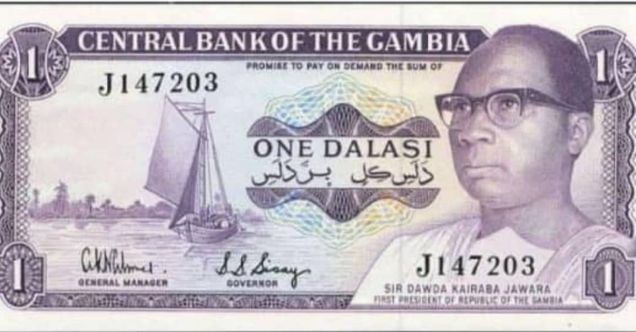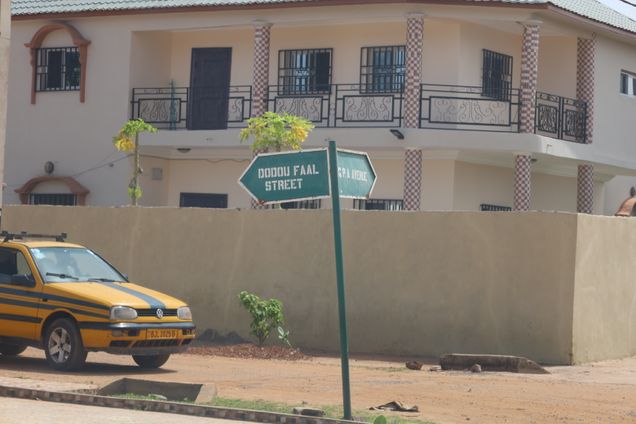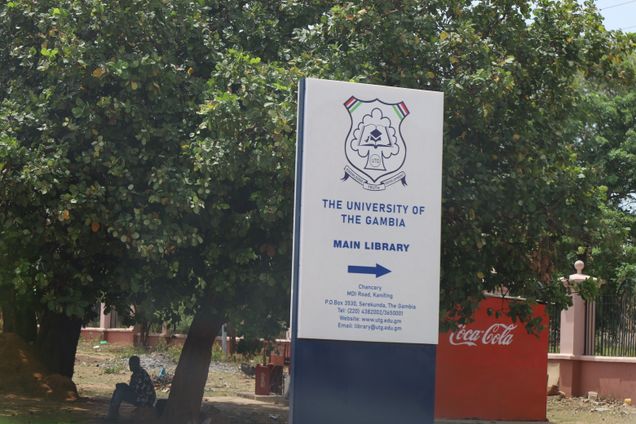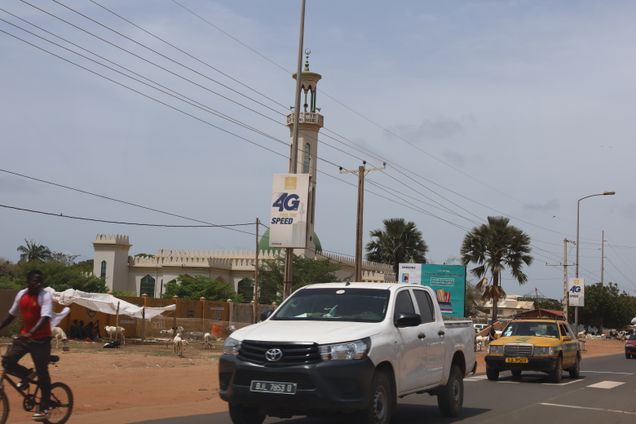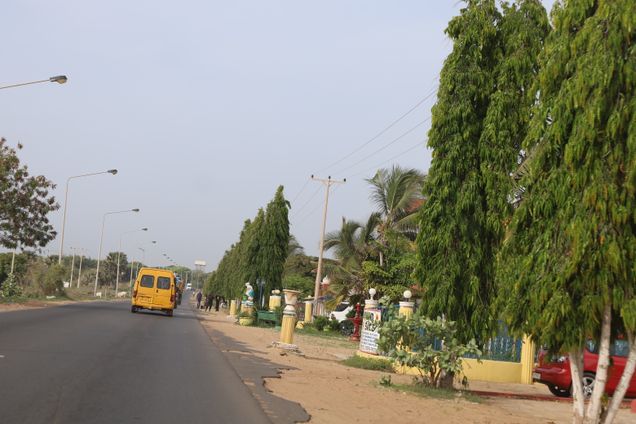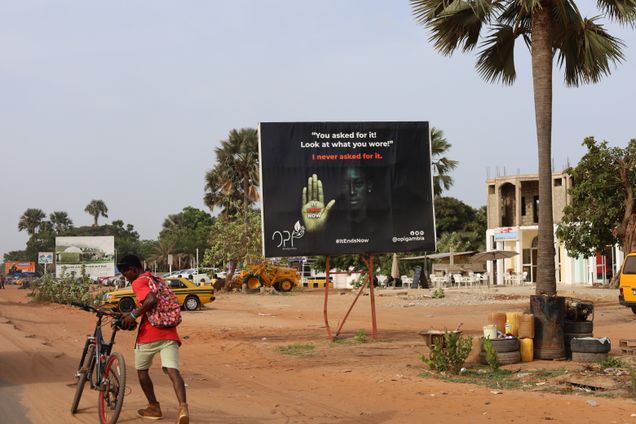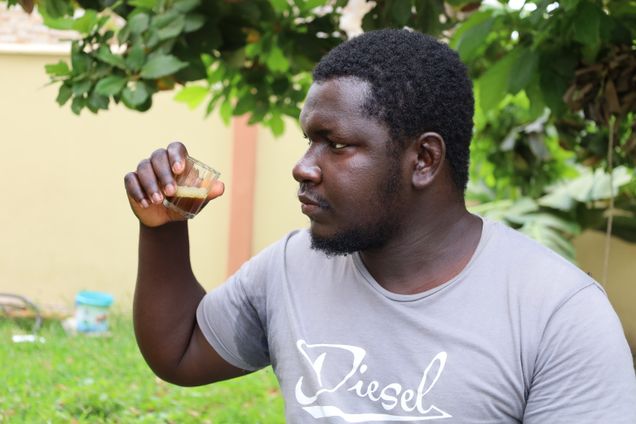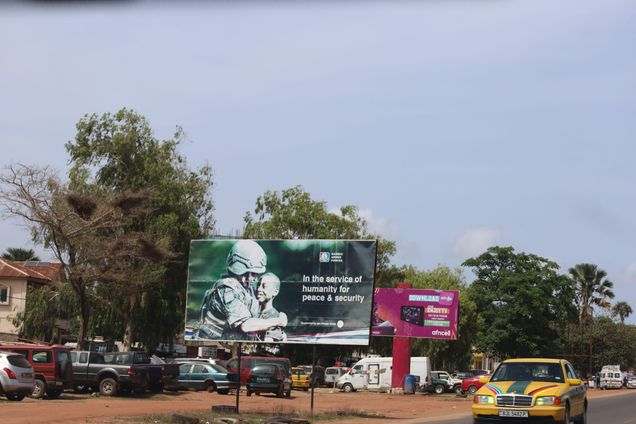Unit 1: Dr. Bala Saho

Metadata
| Title | Conversation with Bala Saho |
| Interviewer | Fallou Ngom |
| Subject | Mandinka Ajami Literacy, Ajami in Historical Work, Ajami in Health, Mandinka Ajami in Daily Life in The Gambia. |
| Content | Dr. Bala Saho is Associate Professor of History at the University of Oklahoma. He was born in Badibu Salikeñe in the North Bank Region of The Gambia. He attended both Quranic and English schools in The Gambia. Like many Gambians, he used to attend the English school in the morning and the Quranic school in the evening. Later, he was sent to the Quranic school of Suwaarekunda in Kerewaan to continue his Islamic education. Then, he moved to Banjul, the capital of the country, to attend high school. After he graduated from high school, he worked in the Oral History Division (now called the Center for Arts and Culture) for a number of years before pursuing his studies in the United States. Professor Saho acquired Mandinka literacy skills during his Quranic education. In this video, he discusses many aspects of Mandinka Ajami literacy in The Gambia, including the use of Ajami in public health, in people’s daily lives, and its significance in documenting Gambian history. Dr. Saho also reflects on the importance of oral history and tradition in recording local knowledge, and about the role of proverbs in teaching and educating the youth. He also discusses the enduring role of colonialism that has often adversely affected knowledge production in Africa. Dr. Salo highlights the critical importance of Ajami as a grassroots form of literacy that has for a long time operated parallel to Western-based institutions. |
| Language | Mandinka |
| Script | Mandinka Ajami |
| Location | Brusubi, Serrekunda, The Gambia |
| Pedagogical content/application | Includes relevant linguistic, stylistic and cultural skills as identified in our assessment guidebook/ ACTFL guidelines |
| Access condition and copyright | These materials are subject to copyright and are distributed under the terms of the Creative Commons Attribution-NonCommercial 4.0 License, which permits non-commercial use, distribution, and reproduction in any medium, provided the original author and source are credited. For use, distribution or reproduction beyond these terms, contact Professor Fallou Ngom (fngom@bu.edu). |
| Contributors | Fallou Ngom, Bala Saho, Ablaye Diakite, Daivi Rodima-Taylor, Mamadou Aw Ndiaye, Ousmane Cisse, Alison Parker, and Frank Antonelli. |
| Required citation information | Fallou Ngom (PI), Bala Saho, Ablaye Diakite, Daivi Rodima-Taylor, Mamadou Aw Ndiaye, Ousmane Cisse, and other contributors. 2022. “Conversation with Bala Saho.” https://sites.bu.edu/ria/mandinka/mandinka-unit-1/ |
Videos
English Interview with Subtitles
Community Images
(click on the image for a larger view)
Pedagogical Activities
Glossary
- Aadoolu: Cultures, customs, traditions (singular laadoo)
- Ataaya miŋo: Drinking tea
- Ataaya, ataayoo: Hot green tea from China which is popular in West Africa
- Baa ndiŋo or baariŋo: Young, young goat
- Bii: Today
- Boyi: To fall, rain
- Buŋo: Building, house
- Daa: Mouth, entrance
- Diyaata: Tasty, sweet, delicious, easy
- Fo: To say, tell
- Gambiyaa la Kodi-buŋ-baa: Central Bank of The Gambia
- Jaatoo: Bitter tomato, when used in medicine
- Jumaalu: Plural form of who, which (singular jumaa)
- Ka a ñininkaa: To ask someone
- Ka a sene: To plant something, grow, cultivate, plough something
- Ka a yitandi, yiitandi: To show something, highlight, inform, exhibit something
- Ka a ke: To place, do, happen, spend time
- Ka loo: To stand, build, erect
- Kaawakuyaata: Astonishing, mysterious, weird
- Kaŋo: Neck, voice, language, pledge
- Karandirilaa: Teacher, tutor, trainer
- Kibaari-taamansee: Billboard, advertisement sign, information sign
- Kibaaridiilaa: Journalist, communicator, lecturer, reporter
- Kisi-kisiroo, kisikisiroo: Research, investigation, inquiry
- Kodi, kodoo: Currency, money, silver
- Kompiyutoo safeerilaŋo, oridinatooru safeerilaŋo: Computer keyboard
- Kooma: Behind, back, rear
- Koridaalu: Houses, buildings, households, compounds (singular koridaa)
- Kummaayaata: Important, pivotal, necessary, prominent
- Kuntii, kuntiyo: Leader, authority, head, chief
- Kuwo: Thing, affair, business
- Looriŋ: Standing, built, erected
- Manoo: Paved road, tarred road, tar
- Moo: Human being
- Mooroo: Religious leader, diviner, healer
- Moto koyoolu: White cars
- Motoo, wotoo: Car, truck, motor bike
- Motoolu taañaa: Movement of the cars, traffic
- Musoolu: Women, wives (singular musu or musoo)
- Naataaloo: Image, photograph, picture
- Nafaa: Importance, benefit, advantage, value
- Ñimiroo: Chewing (from the verb ñimi, to chew)
- Saatee: Town, village, city, area
- Safeeri-kuloolu: Letters of alphabets and scripts
- Safeeroolu: Writings, texts (singular safeeroo)
- Saloo keeñaa: Manner or way of praying, how to pray
- Saloo: Prayer
- Samaa: Rain
- Senelaa: Farmer
- Sila-baa: Major road, highway, main road
- Sila-fatoo: Roadside
- Sila, siloo: Road, street, way, rule, direction, path
- Siloo laañaa: Road condition
- Suwo: Home
- Taamansee, taamanseeroo: Mark, sign, symbol, description, sample, clue
- Tili, tiloo: The sun, day
- Too: Name
- Tuccoo: Crackling, smashing, breaking
- Yiri-juwoo: Tree trunk
Notes
- Kunta Kinteh or Kunta Kinte: Name of a Gambian slave that Alex Haley claimed as his ancestor in his popular 1976 novel, Roots: The Saga of an American Family.
- Kuwo do sutuyaata daa la, wo maŋ ñanna fo la: “There are some things closer to the mouth that should not be said,” a proverb that teaches loyalty and the importance of keeping secrets.
- Niŋ tuccoo diyaata i ye, i ka jaatoo le sene: “If you like the crackling [of seeds in your mouth], you must grow bitter tomatoes,” a proverb that teaches work ethic for success in life. It suggests that if one desires a good life, one must work hard to be able to afford it. The crackling of the bitter tomato seeds is a metaphor for the good life that one desires, and the growing of the fruits represents the hard work a successful life requires.
- Sir Dawda Kairaba Jawara: First president of The Gambia, who served from 1970 to 1996.
- Taba jamboo warata baariŋo la ñimiroo ti le: “The leaf of a kapok tree is too big for a little goat’s mouth.” This proverb emphasizes the importance of keeping secrets from immature or young people. The kapok tree leaf represents the secret and the little goat represents the immature or young person.
- Yahya Jammeh: Former president of The Gambia, who served from 1994 to 2017.
Exercises:
Comprehension || Writing || Listening / Speaking and Conversation || Cultural Competence
Comprehension: Video
Comprehension: Image
Writing
Listening / Speaking and Conversation
- Podkastoo niŋ Widewoo: Podkastoo ke ñiŋ widewoo kaccaa-kuma-kaŋoolu kunna, waraŋ i ye widewoo sutuŋoolu ke minulu be widewoo la kaccaa-kuma-kaŋoolu koyindi la.
Cultural Competence
- Teyaataroo safee aniŋ Mandinka safeeri-kuloolu la muŋ be aada kummaayaariŋo yitandi la.

